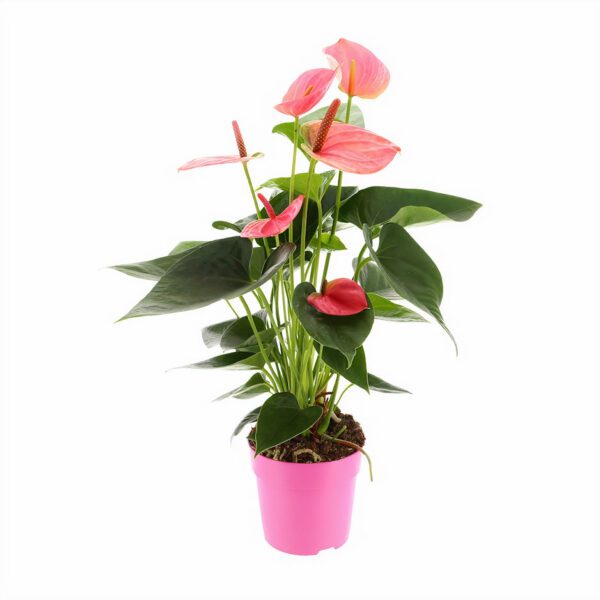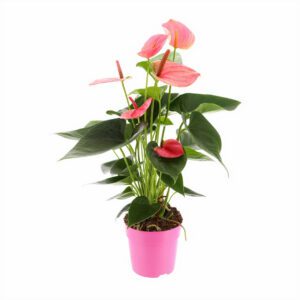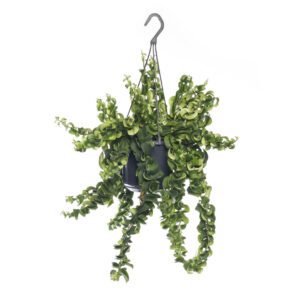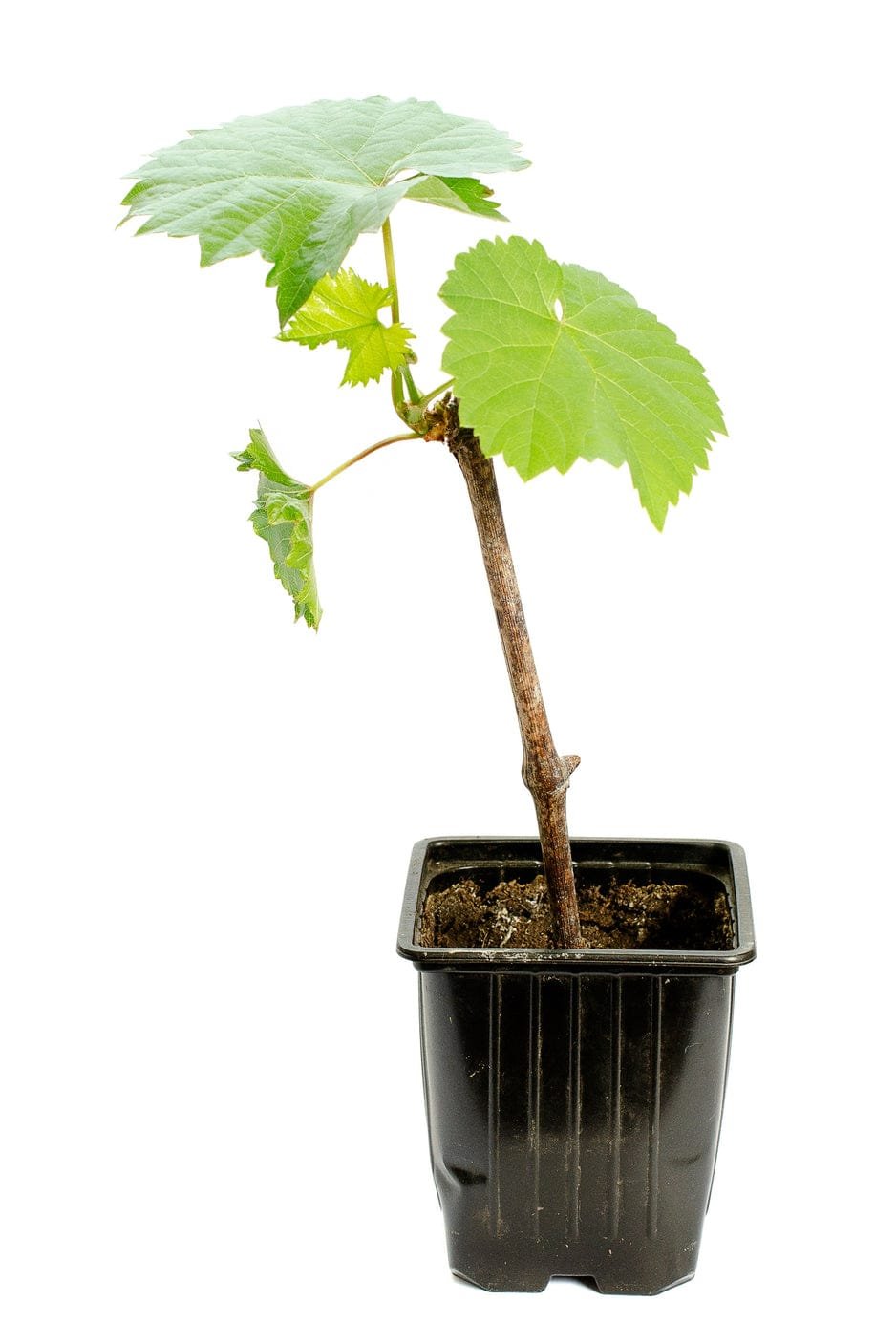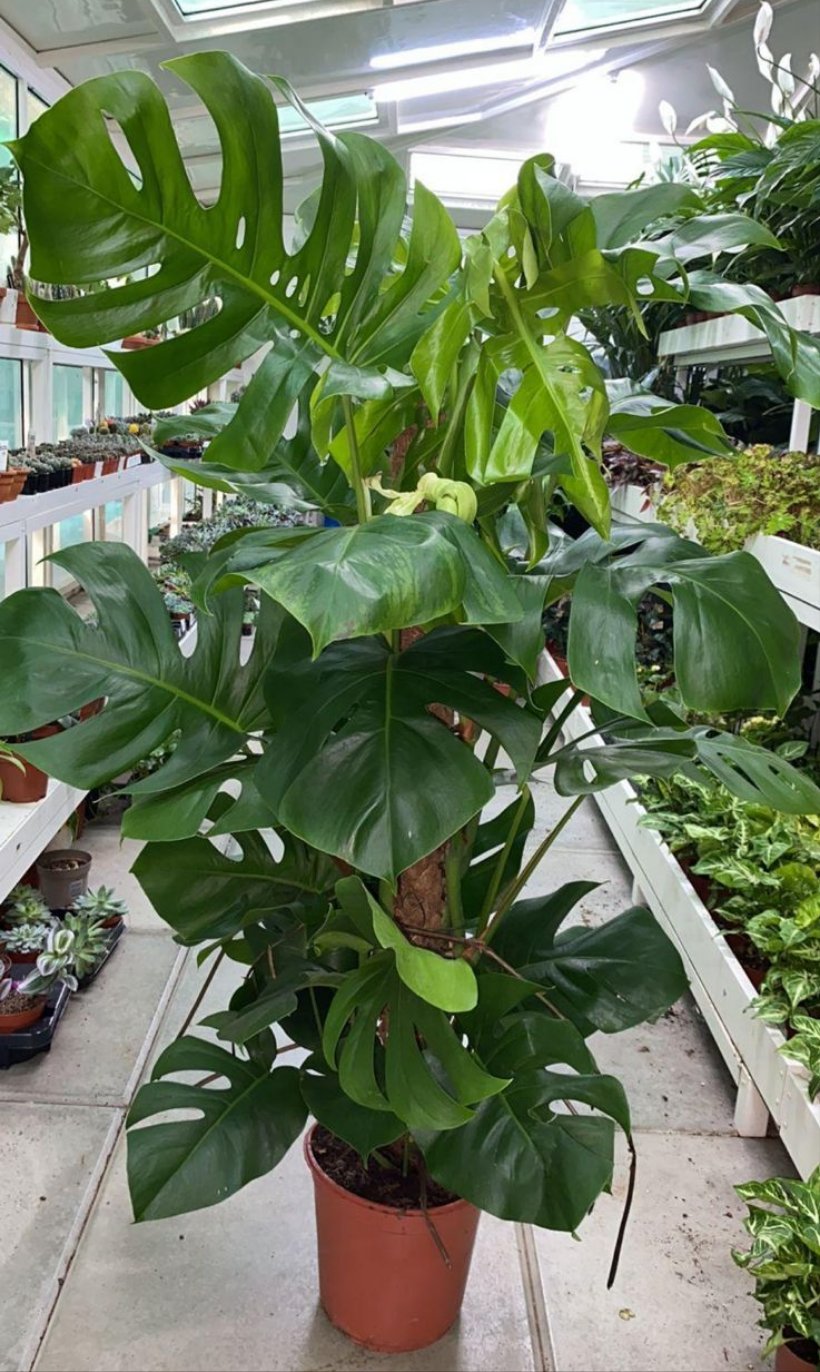Description
The true flowers are small and grow on the spadix (a spike-like structure) that rises from the center of the spathe. Native to the tropical regions of Central and South America, this plant brings a touch of elegance and exotic beauty to any indoor space with its long-lasting, colorful blooms and lush, green foliage.
The Anthurium Pink is highly decorative, making it popular as an indoor plant. The spathes can last for weeks and appear year-round with proper care. It’s also known for its air-purifying qualities, as it helps remove toxins like formaldehyde and ammonia from the air.
Plant Care for Anthurium Pink (Flamingo Flower)
Light:
- Anthurium Pink thrives in bright, indirect light. Too much direct sunlight can scorch its leaves, while insufficient light will result in fewer flowers. Place it near a bright window, but protect it from direct sun exposure.
Watering:
- Keep the soil consistently moist but not soggy. Water the plant when the top inch of soil feels dry. Be sure to use a pot with drainage holes, as the Anthurium doesn’t tolerate standing water, which can lead to root rot. Mist the plant regularly or place it near a humidifier to keep the humidity level high.
Humidity:
- High humidity is essential for Anthuriums to thrive. Ideally, aim for humidity levels above 60%. If your home is dry, especially in winter, mist the plant regularly, group it with other plants, or use a humidity tray to increase the moisture in the air.
Temperature:
- The Anthurium Pink prefers warm temperatures between 65°F to 80°F (18°C to 27°C). Avoid exposing it to temperatures below 55°F (13°C) or sudden temperature fluctuations, which can stress the plant and lead to poor growth.
Soil:
- Use a well-draining potting mix, such as a mix designed for orchids or a blend of peat moss, pine bark, and perlite. The soil should be slightly acidic, and good drainage is key to keeping the plant healthy.
Fertilizing:
- Fertilize the plant with a balanced, slow-release fertilizer or a liquid fertilizer diluted to half strength once a month during the growing season (spring and summer). Avoid over-fertilizing, as this can cause salt buildup and damage the roots.
Pruning:
- Regularly remove any yellowing or dead leaves and spent flowers to keep the plant looking its best. Pruning also helps direct energy to new growth and encourages more blooming.
Repotting:
- Repot the Anthurium every 1-2 years or when it becomes root-bound. Use fresh, well-draining soil and a pot that is only slightly larger than the current one to avoid water retention issues.
Flowering:
- With proper care, the Anthurium Pink can bloom year-round. To encourage more blooms, ensure the plant gets plenty of bright, indirect light and maintain a warm, humid environment.
Pest Control:
- Although generally pest-resistant, Anthuriums can occasionally be affected by aphids, spider mites, or mealybugs. Inspect the plant regularly, and if pests are detected, treat with insecticidal soap or neem oil.
Toxicity:
- The Anthurium Pink is toxic to both pets and humans if ingested, as it contains calcium oxalate crystals that can cause irritation to the mouth and throat. Keep it out of reach of pets and children.
The Anthurium Pink (Flamingo Flower) is a stunning houseplant that adds a splash of color and elegance to any indoor setting. Its long-lasting pink blooms and relatively low maintenance make it an excellent choice for both novice and experienced plant enthusiasts.
Additional Information
| Size | 25cm – 35cm, 40cm – 50cm, 50cm – 60cm |
|---|---|
| Flowers Color | Pink |
Disclaimer
The image displayed is for reference only. The actual product may differ in shape, appearance, climate, age, height, and other factors. Plants will be delivered in plastic pots unless the customer explicitly selects a different pot option.
All information provided is shared in good faith. However, we make no representations or warranties of any kind, express or implied, regarding the accuracy, adequacy, validity, reliability, availability, or completeness of the information on this site.

